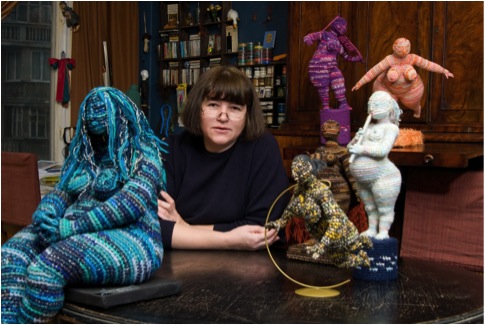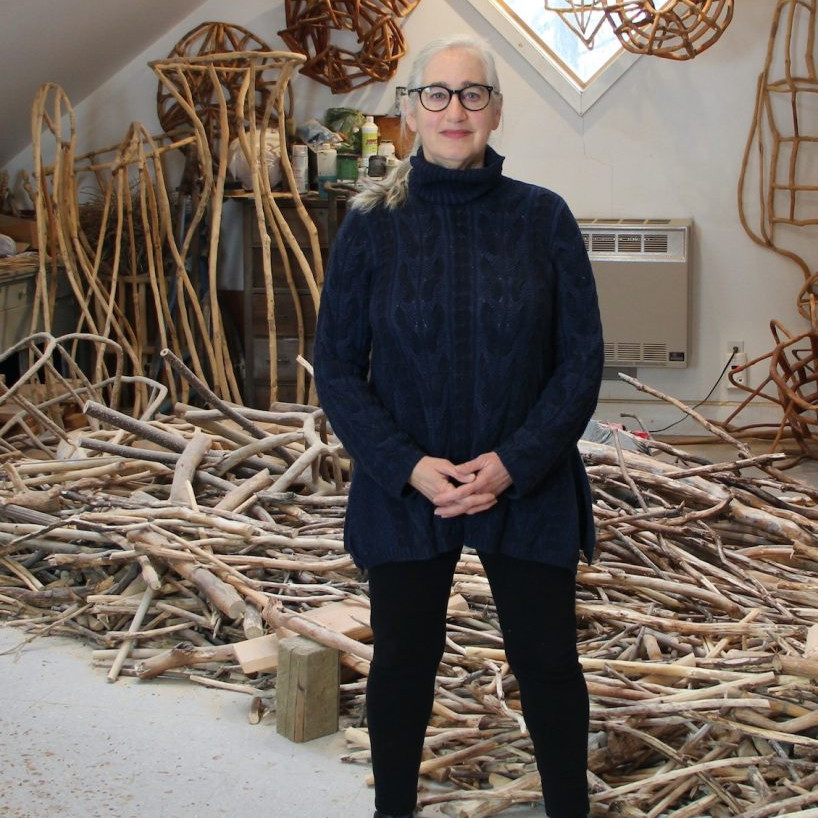Yulia Ustinova Sculptor - Moscow, Russia
Do you call your women ‘big women’ or do you have a special name for them?
I prefer to call them ladies or ‘plumpies’. Originally, instead of “plumpies” Iused the Russian word “tetki” – it means uneducated and ungroomed women. Maybe there is a more appropriate word for this – it depends on their image and my mood.
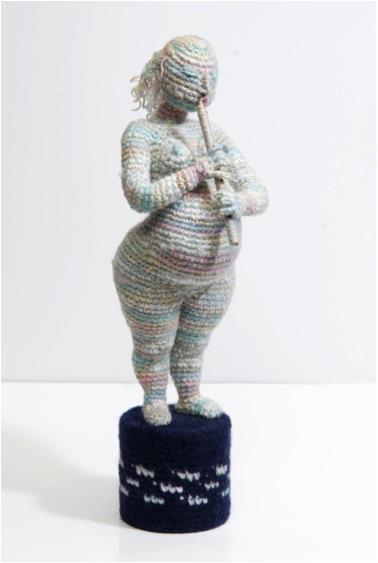
Can you tell us how you came to crochet your women?
I was born in an artistic family. My mother is a sculptor, my father is a book illustrator. My mother is very good at handiwork, so she has taught me how to crochet when I was 5 years old. At 11 I entered a professional artistic school learning the Academy of pictorial arts. There I used to practice painting, graphics, sculpture, and during my spare time – crochet. I`ve crocheted everything – clothes, simple toys, things for interiors. I don`t know exactly how, but when I was already working as an illustrator, an idea occurred to me. I thought about setting a doll vertically, that is how carcass and plinth appeared . That way I have combined sculpture and my love for crochet.
Your women are not dressed. Why?
I am more interested in plasticity and shape. Clothes make my works look more literary, closer to dolls. And I’m doing something like a parody of “classical” sculptures.
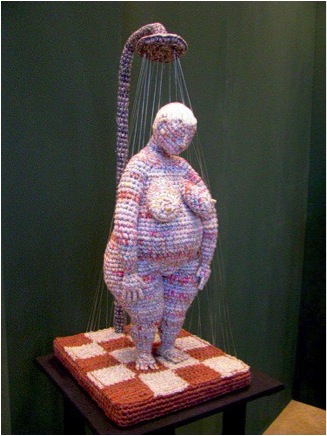
All your women are doing daily tasks. Can you explain how you decide on the positions?
I am taking all my ideas from real life which surrounds me, from my reflections about some events. Sometimes plasticity dictates the plot, sometimes, on the contrary, feelings and impressions from real life get shape in my works.
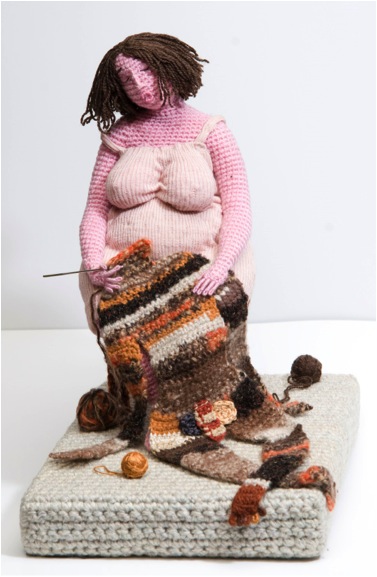
Do you use models for your work?
I don`t use models. Almost always the model is me. All the positions of the hands, legs, and head com from looking in the mirror, even if I am making women with another figure or even a man…
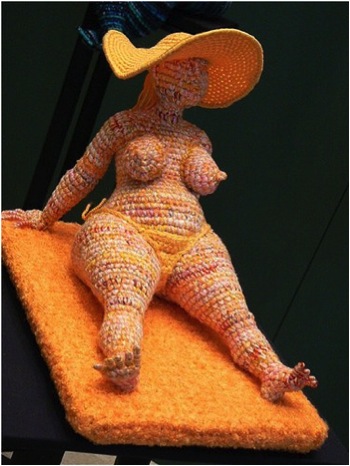
Do you do life drawing exercises?
Sometimes I can make a little sketch, if an interesting idea suddenly occurs to me. I like to make sketches on a beach, but it is hard, I don`t like to confuse people. So I put on sunglasses and pretend that I am drawing the sea.
Where do you get your women from?
They are all around me, my friends, my acquaintance, almost every one of them has problems, and lots of them have a difficult personal life, or are unfortunate in love. Something concentrates and the lady or plumpie (tetka) appears.
What size are your crochet sculptures?
They are about 25cm to 60cm in size. I’d love to make them bigger, but there is a metallic carcass in them and it`s quite hard to hold in my hands and turn the heavy and barbed construction.
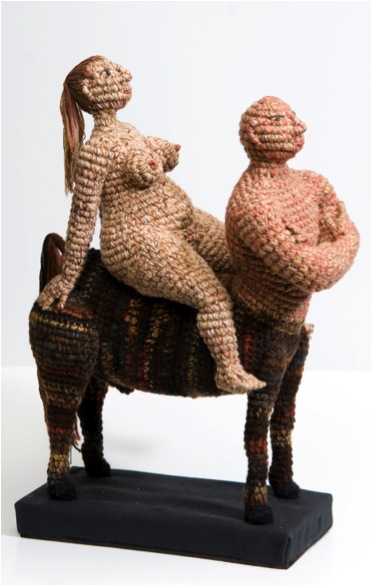
How solid are your figures?
Works are crotcheted very tight and solidly filled with cotton wool. So they are quite solid.
Do you always use variegated wool?
Always, for the last 10 years. Previously I`ve crocheted with pink and flesh-colored threads. But it really made my works more doll like. I am making variegated threads myself from 4 or 5 strands. I need colors to work for my idea.
You have a degree, from Moscow Printing Arts, When did you get this and how has it helped you with your current work?
I`ve got it after school and I earned money as a children books illustrator. So it helps me a lot. I appreciate the fact that crocheted sculptures are my hobby, and I can crochet when I want to, and when I have control over my works.
Where have you exhibited your work?
They are not exhibited constantly, except in Olga Okudzava`s museum of author dolls. Often I have periodic exhibitions at The Central House of Artists.
How can people get your work?
I sell my works quite rarely, they only go to good hands or to the museums. In Russia I am selling them during exhibitions. I`ve never sent them to other countries, but now I am getting a lot of such requests, since I`ve made my page on Facebook.
Do you do specific commissions?
I`ve made a work for a request only once, for my regular customer, whom I couldn`t refuse. I think that it wasn`t great, because I prefer to work with my own ideas.
Contact
Email: ustinova1961@gmail.com
Yulia Ustinova, Moscow, Russia
Translation by Mikhail Melnikov-Vorreiter.
Interview by Deborah Blakeley, March, 2013
Think a colleague or friend could benefit from this interview?
Knowledge is one of the biggest assets in any business. So why not forward this on to your friends and colleagues so they too can start taking advantage of the insightful information the artist has given?
Other artists you may be interested in:


